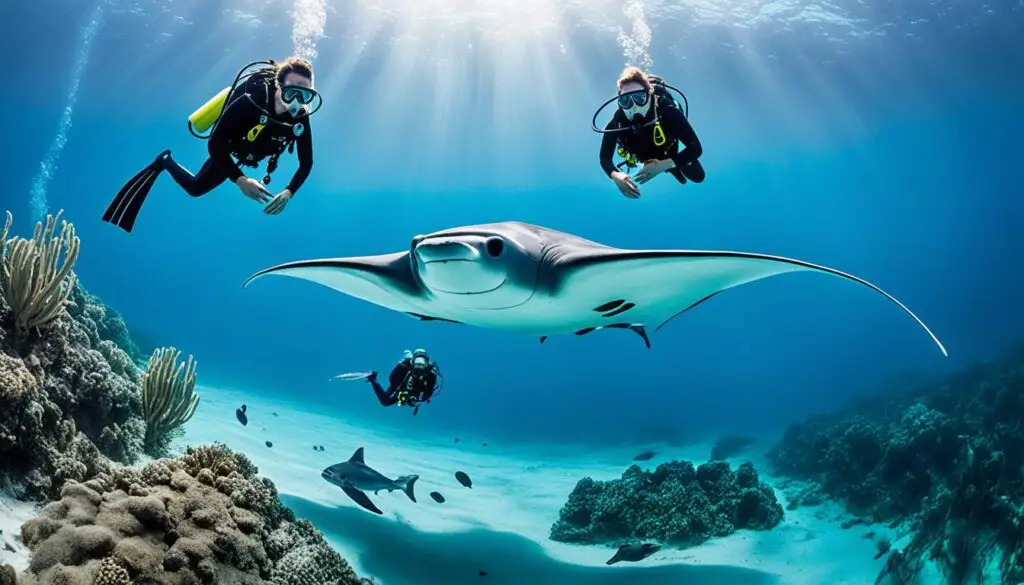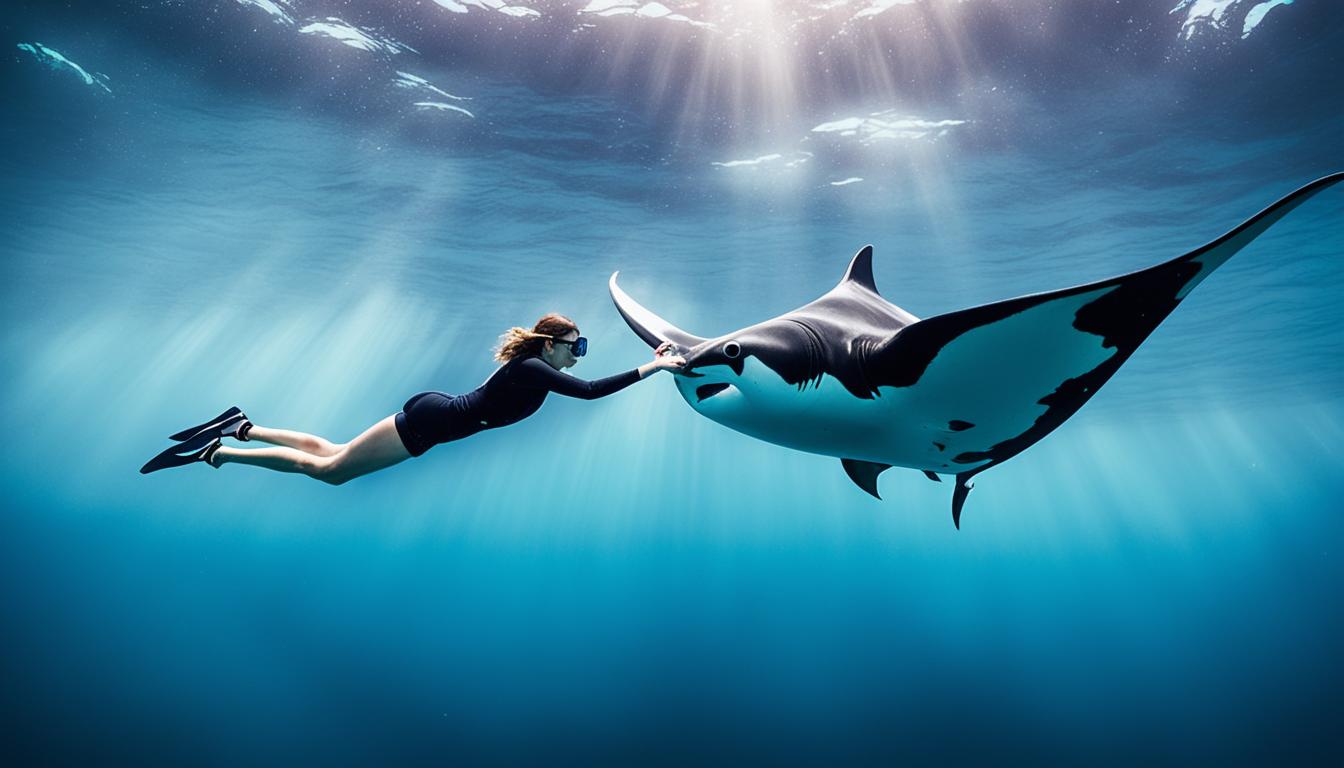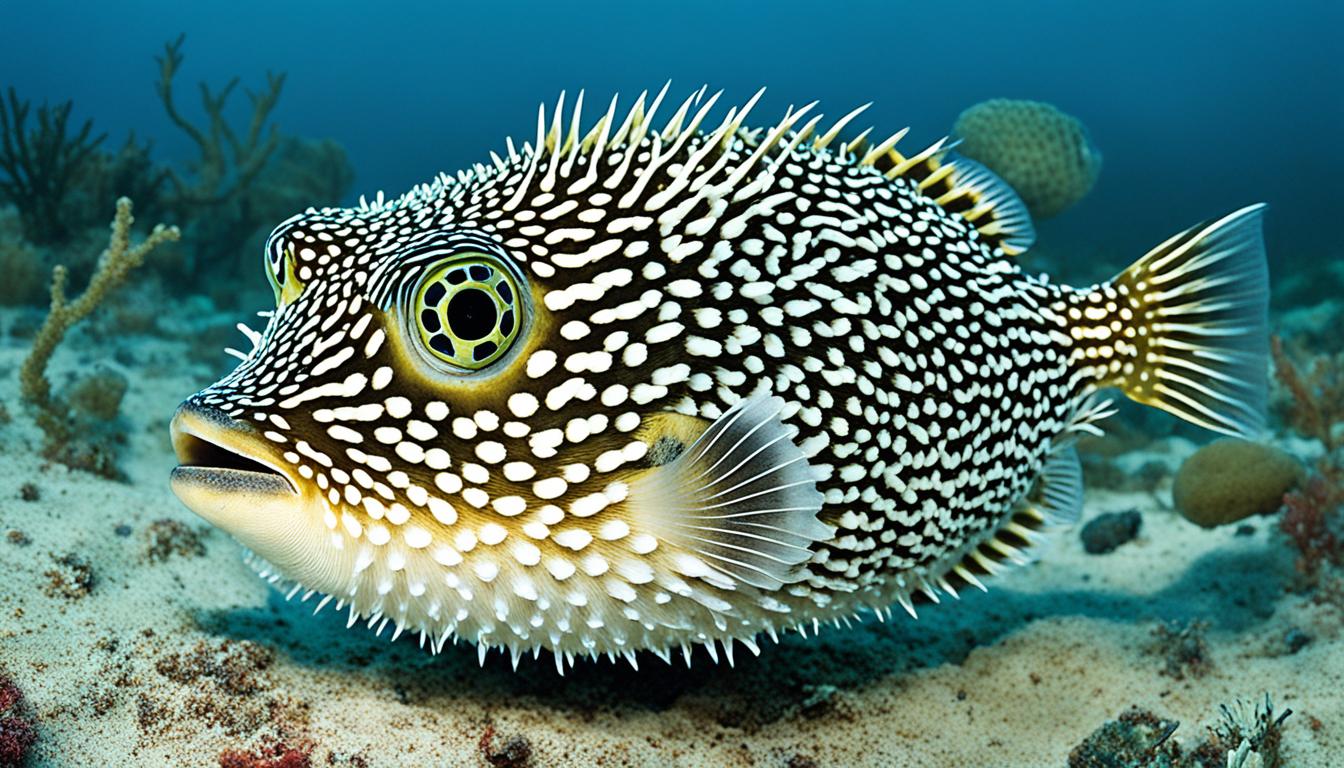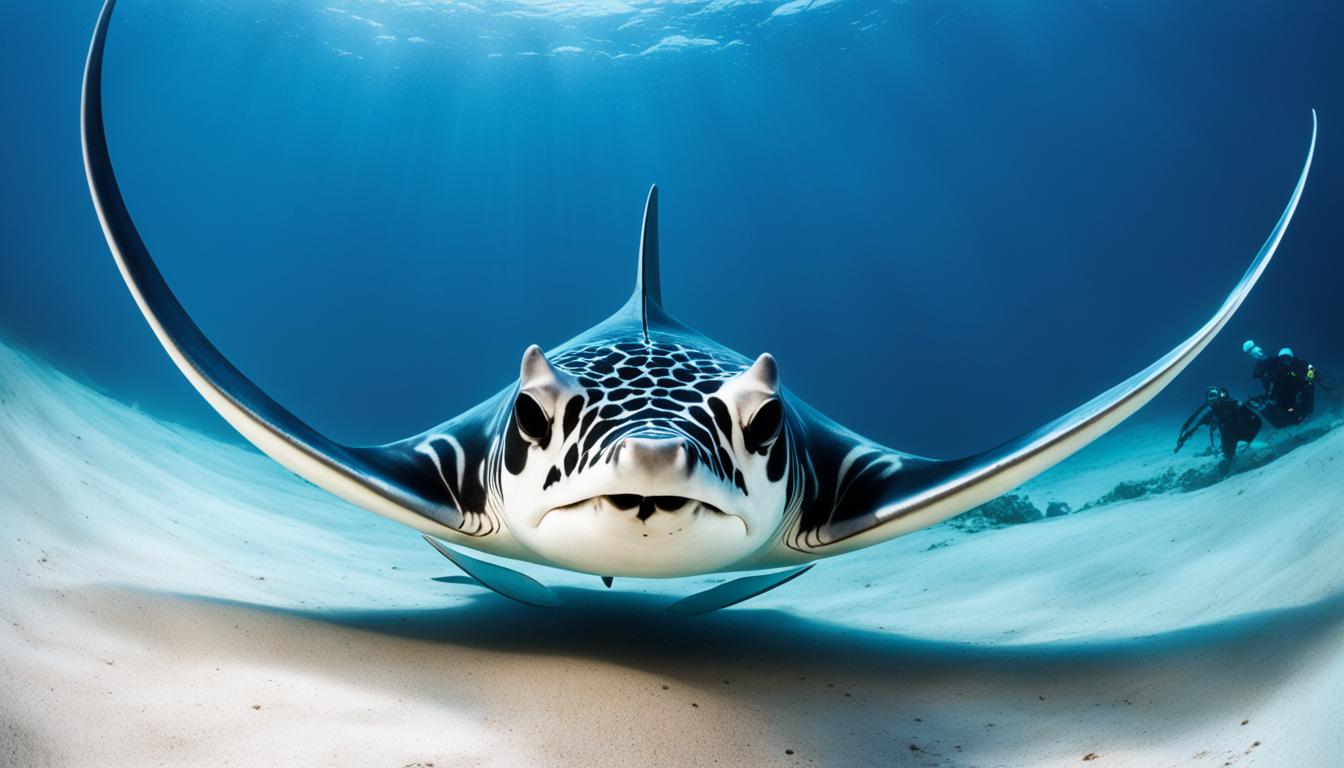Have you ever wondered if manta rays are dangerous to humans? These huge sea creatures are often called the gentle giants of the ocean. They are big and impressive, but are they a threat to us? Let’s find out.
Manta rays are known for being peaceful and non-aggressive. There have been no recorded attacks on humans by these rays. This makes them safe to be around.
In this article, we will explore more about manta rays. We’ll look at their behavior and habits to see if they are dangerous to humans.
Understanding Manta Ray Behavior
Manta rays are known as the gentle giants of the sea. It’s important to understand their behavior if you’re interested in these amazing creatures. They can grow up to 29 feet wide and are filter feeders, eating plankton as they glide through the water.
This way of eating makes them very calm and peaceful. They don’t usually attack humans, which lets them live in harmony with us.
Gentle Giants of the Ocean
Manta rays move through the water with grace and beauty. They are truly awe-inspiring. Their large size and friendly nature make them seem like gentle giants of the ocean.
They often show curiosity towards divers and snorkelers. When you meet them underwater, they might even come closer, offering a unique chance for an up-close encounter.
Curiosity and Human Interaction
Manta rays are naturally curious and like to check out what’s happening in the water. They might swim closer to people because of this. Interacting with them can be an exciting experience.
It shows how humans and these gentle giants can connect. It’s important to remember to respect their space during these moments.
Are manta rays dangerous to humans?
Many people think manta rays are dangerous because they are big and look different. But, this isn’t really true. Let’s look at the facts about how safe or dangerous manta rays are to humans.
Misconceptions About Aggressiveness
Manta rays are often seen as aggressive because they look big. But, they don’t have the stinging tails that stingrays do. This means they are much less likely to be dangerous to people. They eat plankton and small fish, showing they are not aggressive towards humans.
When you’re near manta rays, it’s important to keep your distance. This lets you see how beautiful they are without bothering them. Sharing the truth about manta rays can help people overcome their fears. This way, more folks can enjoy seeing these amazing creatures in the wild.
| Manta Rays | Stingrays |
|---|---|
| Non-aggressive nature | Aggressive defense mechanism |
| Lack of stinging tails | Presence of venomous spines |
| Filter feeder diet | Carnivorous diet |
| Safe to swim with | Requires caution and distance |
Physical Characteristics of Manta Rays
Manta rays are amazing creatures that capture the hearts of many. Their size and beauty make them stand out in the ocean. They can grow up to 29 feet wide, with a unique diamond-shaped body and elegant fins.
Size and Appearance
Manta rays are big and have a special look. Their flat bodies help them move smoothly through the water. They have dark skin on top and light skin underneath, which helps them hide from predators and blend with sunlight.
Comparison with Stingrays
When comparing manta rays to stingrays, there are key differences. Manta rays don’t have barbed tails or stinging spines. This makes them safe to be around in the water. Knowing these differences helps us appreciate manta rays more, rather than fearing them.
Safe Swimming Practices with Manta Rays
To enjoy the beauty of manta rays safely, it’s key to follow certain rules. These rules help keep you and the manta rays safe. They also make sure you can have peaceful moments with these amazing creatures in their home.
Maintaining Respectful Distances
It’s important to stay away from manta rays to keep everyone calm. Move slowly and watch from afar to make sure it’s safe. If you get too close, you might scare them, which could be dangerous for both you and the manta rays.
Importance of Not Touching Manta Rays
Never touch manta rays. It can hurt their protective layer and scare them. This could be dangerous for both you and the manta rays. By watching them from a distance, we show respect and let them swim freely. This helps us all get along better.
Risks of Manta Ray Encounters
Manta rays are usually gentle, but there are risks when interacting with them, especially for beginners. Knowing how to stay safe can make your time with manta rays better and safer.
Potential Accidents During Interactions
Accidents with manta rays can happen when people don’t know how to avoid them. Swimmers and divers might not realize how big and fast these creatures are. This can lead to unexpected meetings. Learning about their behavior can lower the risk of accidents. Always pay attention to where you are when swimming near manta rays.
Understanding Manta Ray Safety Tips
Staying safe is key when you’re with manta rays. Here are some important tips to avoid getting hurt:
- Maintain a safe distance from the manta rays. Watching them from a distance lets you enjoy their beauty without bothering them.
- Observe their behavior to understand their mood. Knowing how they act can warn you of any dangers.
- Never attempt to touch manta rays, as this can scare them and cause them to react badly.
- Stay calm and relaxed in the water to avoid making waves that might draw their attention.
Using these safety tips can help reduce the risks of manta ray encounters. It’s important to learn about the creatures and the place you’re in for a safe and fun experience.
Human Impact on Manta Rays
Manta rays face many threats from human activities. Overfishing is a big problem, as they often get caught in fishing nets by mistake. They are also hunted for their gill rakers, which are used in traditional medicine.
Coastal development destroys their homes, making it tough for them to find food and mate. This is a big threat to their survival.
Tourism can also harm manta rays. While it can help spread awareness, bad tourism practices stress them out. This includes getting too close during snorkeling and diving trips, which affects their eating habits.
Your actions can help protect manta rays. Supporting conservation efforts and choosing eco-friendly tourism helps marine ecosystems. By valuing these creatures and acting sustainably, you can help save them. Your actions can really make a difference.

Conservation Efforts for Manta Rays
Manta ray conservation is key to keeping marine ecosystems healthy. Many groups work hard to protect manta rays. They do this by creating safe areas in the ocean and setting rules for fishing.
This helps keep manta rays safe from harm. It lets them live in their natural homes.
Teaching people about manta rays is also important. We need to show how vital they are to the ocean. This helps stop harmful actions towards them.
Working with local communities is crucial. It makes sure people visit manta rays safely and learn from them. This way, seeing manta rays is both safe and rewarding.
Helping conservation groups is a big step towards saving manta rays. You can join efforts to spread the word and raise money for research. Every action helps protect these amazing creatures.
When you enjoy the beauty of manta rays, remember you’re helping their future. Your support lets future generations experience their magic too.









